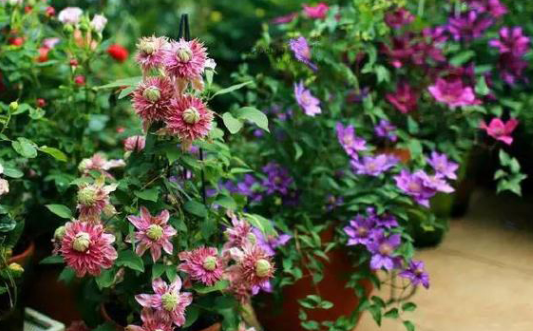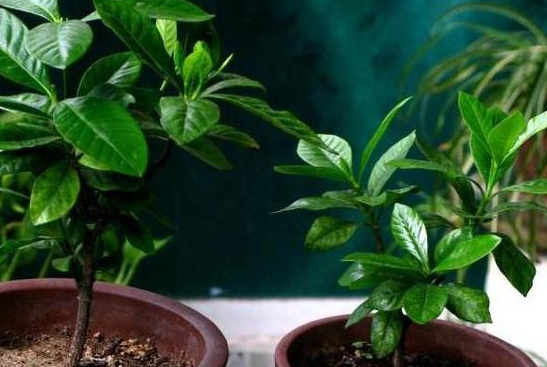The reason why Clematis does not bloom and what to do? what are the maintenance methods in winter?
Clematis, known in Europe as the vine queen, can be seen that it flowers very beautiful. Clematis like fertile, well-drained alkaline loam, bogey ponding. Summer is drier, and plants die easily if the soil cannot hold water.

Why Clematis does not bloom and what to do
1, Clematis flowering
Clematis flowering is mainly concentrated in May-July, but in fact, because there are many varieties, and the characteristics of each variety are different, so the flowering time is not the same, there are flowering in spring, there are also flowering in summer and autumn, depending on the variety.
2. Why does Clematis not bloom
Clematis do not flower reasons, the most common is improper pruning:
Clematis can be pruned in three ways: no pruning, light pruning or heavy pruning. The pruning time is not fixed, mainly according to the flowering time of different varieties to decide when to prune. If you don't know the variety and characteristics of clematis, you may accidentally cut off the flower buds and important branches of clematis, which will lead to its failure to bloom.
If you want to prune, it is best to combine the whole growth period of clematis to analyze the best pruning time. Specific pruning methods can refer to clematis pruning methods.
Clematis does not bloom, most likely due to the influence of light:
Light is very important to the growth of clematis. Only when there is enough sunlight can clematis grow well. Basically, even the most shade-tolerant clematis varieties need more sunlight, otherwise the clematis leaves will turn yellow and the plants will grow too long, which will lead to only leaves and no flowers.
Of course, the reason why clematis will not bloom may also be because clematis plants are too small or enter the dormant period, is not too much to worry about, do a good job of maintenance can be.
What are the winter maintenance methods of Clematis?
1. Clematis temperature requirements
The most suitable temperature for Clematis dormancy is 0-10 degrees Celsius. In winter, the temperature will be controlled within this range, and the small iron will be safe. But clematis are actually very hardy, and temperatures of minus 25 degrees are fine. If potted in North China, it is best to wrap the flowerpot with foam or plastic cloth to keep it warm. It's not used anywhere else.
For ground clematis, the soil around the roots can be thickened in winter to better protect the root neck. Potted clematis can be moved indoors, but should be placed in a lower temperature garage, balcony, corridor, etc.
2, Clematis watering requirements
Clematis watering rules are the same as any other season until the temperature drops below freezing-no water, no dry. Put your fingers 4-5 cm into the soil and don't water if you feel wet. Before winter freezes, both potted and ground-grown clematis need to be watered once and thoroughly, and then do not need to be watered until spring.
3. Clematis blossoms in winter
Clematis family, winter flowering varieties are few, and most of the Clematis tendrillum group varieties, such as 'freckles' and so on. Clematis with large flowers is basically dormant in winter.
But clematis enthusiasts have found that Florida clematis, which usually blooms between June and September, is very plastic in its flowering timing. This group of varieties is very suitable for indoor potted plants. As long as the temperature is right and the nutrition is kept up, they can bloom almost all year round. Therefore, many flower friends will move this group of clematis indoors in winter to give them suitable growth temperature and let them continue to bloom. the most popular varieties in this group are utopia, little green, good memories, best wishes, etc. If they are pruned in September or October, they can bloom during the Spring Festival.
How does Clematis winter? Clematis winter maintenance methods
Clematis alias clematis peony, fan lotus, gold package silver, mountain wood through, fan lotus, clematis; Ranunculaceae, clematis plants, mostly deciduous or evergreen grass vines, clematis enjoy the "vine flower queen" of the reputation, flowering from early spring to late autumn (there are also a few winter flowering varieties), fruit period summer. But in winter, when everything dies, clematis put away their clothes and go dormant, saving strength for next spring. How should I care for clematis at this time? How does Clematis winter?
Clematis flowers in winter
Clematis family, winter flowering varieties are few, and most of the Clematis tendrillum group varieties, such as 'freckles' and so on. Clematis with large flowers is basically dormant in winter.
But clematis enthusiasts have found that florida clematis, which usually blooms between june and september, is very malleable in its timing. This group of varieties is very suitable for indoor potted plants. As long as the temperature is right and the nutrition is kept up, they can bloom almost all year round. Therefore, many flower friends will move this group of clematis indoors in winter to give them suitable growth temperature and let them continue to bloom. If they are pruned in September or October, they can bloom during the Spring Festival.
Clematis watering requirements
Clematis watering rules are the same as any other season until the temperature drops below freezing-no water, no dry. Put your fingers 4-5 cm into the soil and don't water if you feel wet. Before winter freezes, both potted and ground-grown clematis need to be watered once and thoroughly, and then do not need to be watered until spring.
Clematis temperature requirements
The most suitable temperature for Clematis dormancy is 0-10 degrees Celsius. In winter, the temperature will be controlled within this range, and the small iron will be safe. But clematis are actually very hardy, and temperatures of minus 25 degrees are fine. If potted in North China, it is best to wrap the flowerpot with foam or plastic cloth to keep it warm. It's not used anywhere else.
For ground clematis, the soil around the roots can be thickened in winter to better protect the root neck. Potted clematis can be moved indoors, but should be placed in a lower temperature garage, balcony, corridor, etc.
To sum up: good protection in winter is the guarantee of next year's flowers. It doesn't take much effort to take care of Xiao Tie, but it can't be completely ignored. Don't forget to spend some thought for Xiao Tie while you are in the nest!
Clematis winter maintenance methods
Clematis temperature requirements
The most suitable temperature for Clematis dormancy is 0-10 degrees Celsius. In winter, the temperature will be controlled within this range, and the small iron will be safe. But clematis are actually very hardy, and temperatures of minus 25 degrees are fine. If potted in North China, it is best to wrap the flowerpot with foam or plastic cloth to keep it warm. It's not used anywhere else.
For ground clematis, the soil around the roots can be thickened in winter to better protect the root neck. Potted clematis can be moved indoors, but should be placed in a lower temperature garage, balcony, corridor, etc.
Clematis watering requirements
Clematis watering rules are the same as any other season until the temperature drops below freezing-no water, no dry. Put your fingers 4-5 cm into the soil and don't water if you feel wet. Before winter freezes, both potted and ground-grown clematis need to be watered once and thoroughly, and then do not need to be watered until spring.
Clematis flowers in winter
Clematis family, winter flowering varieties are few, and most of the Clematis tendrillum group varieties, such as 'freckles' and so on. Clematis with large flowers is basically dormant in winter.
But clematis enthusiasts have found that Florida clematis, which usually blooms between June and September, is very plastic in its flowering timing. This group of varieties is very suitable for indoor potted plants. As long as the temperature is right and the nutrition is kept up, they can bloom almost all year round. Therefore, many flower friends will move this group of clematis indoors in winter to give them suitable growth temperature and let them continue to bloom. the most popular varieties in this group are utopia, little green, good memories, best wishes, etc. If they are pruned in September or October, they can bloom during the Spring Festival.
To sum up: good protection in winter is the guarantee of next year's flowers. It doesn't take much effort to take care of Xiao Tie, but it can't be completely ignored. Don't forget to spend some thought for Xiao Tie while you are in the nest!
Related
- Fuxing push coffee new agricultural production and marketing class: lack of small-scale processing plants
- Jujube rice field leisure farm deep ploughing Yilan for five years to create a space for organic food and play
- Nongyu Farm-A trial of organic papaya for brave women with advanced technology
- Four points for attention in the prevention and control of diseases and insect pests of edible fungi
- How to add nutrient solution to Edible Fungi
- Is there any good way to control edible fungus mites?
- Open Inoculation Technology of Edible Fungi
- Is there any clever way to use fertilizer for edible fungus in winter?
- What agents are used to kill the pathogens of edible fungi in the mushroom shed?
- Rapid drying of Edible Fungi



